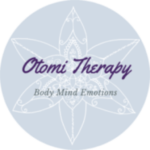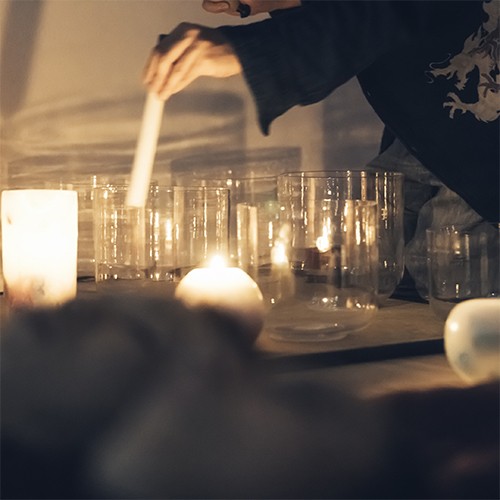What is sound therapy?
Sound therapy, sound wave therapy or therapeutic sound, is a method of relaxing the body and mind for greater well-being. This practice, with its many benefits, includes sound meditation, massages, travel and “sound baths”. And a concept that we continue to develop: soundwave hypnosis.
Faster than meditation or yoga, sound therapy relaxes you and calms your thoughts much faster. Let’s delve deeper into what is happening in our brain and body to better understand. And then why not give it a try and experience it for yourself!
Introduction to sound therapy and sound vibrations
Where does sound therapy come from?
Sonotherapy or sound therapy is not really new, although the term is recent. Indeed, many ancient rituals incorporate sound vibrations and intense music. And most sacred practices incorporate music (with or without dance).
For example, most rituals in Latin America incorporate drums, voices and chants. In Japan, there is also the presence of singing bowls and an instrument called mokugyo in the temple. In Australia, it is the didjeridoo. In India, there are the tablas, sitar, kemanche. In Sufi practices, the ney, the daf…
Similarly in Tibet: in the Buddhist temples you find the Tibetan bowl or singing bowl. It is said that those of a higher quality are made of 7 metals with so-called therapeutic vibrations, however I myself have never attended a melting to verify this… which is generally not allowed for manufacturing secret.
In the case of Tibetan bowls, they are polyphonic. With deep sounds and harmonics, and a very long suspension time. You can feel the difference by ringing them. Depending on their main “note” beyond the harmonics, they resonate with the chakras.
Originally, they were only used for sacred ceremonies in temples to support prayers and chants. Their origin is said to come from Mongolia, Tibet, China, and they are also found in India and Nepal. And globally, in the Himalayan range. These bowls are also used by Mongolian shamans, and according to accounts both for ceremonial and therapeutic purposes.
What types of sounds are used in sound therapy?
Many instruments can be used. Binaural sounds created by computer, or music instruments rich in harmonics. For example, Tibetan bowls, crystal bowls, bell, tinsha, tang drum, handpan, gong…
And my favorite: the therapeutic tuning forks. I use this technique in sonoponcture: shiatsu acupressure but with tuning forks instead of fingers.
Who can benefit from sonotherapy?
Everyone can benefit from it, adults, children and babies. However, it is not recommended at the beginning of pregnancy or for people with pacemakers. Or for a much shorter period of time with softer frequencies.
Why receive a sonotherapy treatment?
The benefits of sonotherapy are wide-ranging. If you suffer from stress, hyperactivity, hypersensitivity or emotionality, headaches and chronic fatigue, sleep issues… Sound therapy will do you a world of good! It is also very effective in calming conflict and tension. Of course, each person is different with a different history and memories. Thus, the effect of sound vibrations on the body and mind varies from person to person. But one thing is same for all : our body stores memories and many can be found in the fascias (tissus that envelop our organs, simply said).
In addition, it has been noted that music helps to reduce pain. Especially in patients suffering from diseases that require intensive treatment. Such as cancer, leukaemia… for example. According to several anaesthetists, it seems that less medication is needed when relaxing music is played in the rooms before operations. Sound and music therapy is also very popular in palliative care in hospitals. It brings a bit of sweetness in a phase that is not easy to go through. It also allows the release of emotional charges to relieve.
Also, I would mention that for transforming your behaviors. In this deep states of relaxation, you can easily integrate new patterns and release old emotion. A way to “reprogram” your brain. I like combining it with emdr technic, which is more knows with the eyes movements. But it can be done with sound stimuli as well.
What are the benefits of sound therapy?
What are the effects of sound waves on the body?
Reducing stress, physical pain, releasing blockages and muscular tension. But also to stimulate the immune and lymphatic system (to energize the body fluids in general). It also helps to restore a feeling of energy and vitality. In addition, it promotes cell regeneration.
As the body is composed of about 70% water, it is an excellent conductor of frequency waves. It therefore resonates with sound vibrations. Bone conduction should also be considered. But this is most obvious when you are in contact with the body. As can be the case during a sound massage.
What are the effects of sound waves on the mind?
To release recent and old emotional tensions, to dive into oneself and reconnect with forgotten parts. And to bring up memories from the subconscious to the conscious mind.
But also to calm the brain activity. It produces waves of slower frequencies, called alpha, as slow as when we sleep or in meditation. It is therefore a modified state of consciousness. A state of relaxation so deep that the subconscious can easily receive messages.
Indeed, this is the principle of hypnosis: when the conscious mind registers new information and integrates it deeply, it influences and transforms our patterns of functioning. And consequently, our behaviour and our attitude to life. This is also what we act on in kinesiology session, with different technics. The conscious mind always follows the subconscious mind, which runs our lives 95% of the time! To transform our way of seeing life, it is therefore on the subconscious that we must act.
The plus of our sound therapy
In addition to the effect of sound vibrations, I use energy, in particular a system of energetic care called Reiki Usui Ryoho. You can read my article, linked bellow this article. This is to facilitate the circulation of chi or ki in the body and mind. In the same way as we do in do-in (self massage coming from shiatsu), kiko (Japanese qi gong), tai chi…
This follows the principle of oriental philosophy, and promotes the self-healing ability of the body. The aim is to help the body reach its homeostatic state again.
My history with sound therapy
It started a long time ago, when I was a little child…. I grew up in the world of sounds.
My father was a sound engineer at France Television, a HF (high frequency) specialist trained at the Armé, and an amateur radio operator. From a very young age, I was taught to be demanding about sound quality. I was also made aware of frequency waves.
And it so happens that I was born extra-sensory, with all the senses highly developed. Including very sensitive and possibly “absolute” ears. I perceive harmony, feel it, re-create it when the vibrations move away from it. My perception of the world is atypical, since it is very sensory. I “capture” beyond the usual field of human perceptions, what is there but not seen. Unlike Naoshi who is synesthetic*, I rather feel the movements of vibrations without perceiving them on a measuring device. It is simply a matter of different brain functioning patterns and not a “gift”.
*Atypical brain function in people associating colours with sound vibrations.
Being a ballet dancer at the time, I started the piano at the age of 7-8. Then the violin, music theory and the flute at the age of 12. Later, I learned basic darbuka and sagats, and various Middle Eastern instruments and rhythms. This was to pass on the understanding of the music to my belly dance and gypsy dance students. I collected musical instruments from practitioners when I felt the need, without seeking performance. They were my meditation: a special and intimate moment with myself, which soothed my anxieties.
I liked to feel the movements in my body, and create dances in my head. In a space between reverie and trans. When travelling and in every country, I always attended dances, ceremonies or rituals, festivals where there was music, drums. Whether it was through professional meetings between artists and dancer-musicians, in the context of my personal research. Or by being invited to it completely spontaneously by life. In Bali, I experienced an intense healing crisis. This was after playing gamlan (Indonesian orchestra) and a therapeutic massage.
When I met Naoshi in 2017 he introduced me to his therapeutic tuning forks and his incredible collection. I felt I needed to incorporate them into my practice as a therapist and bring out the musician in me again. He trained me to all his methods and technics of sonotherapy, and I kept exploring by myself since then. Whether it is in shiatsu, in therapeutic massage, in cranio-sacral therapy or with the emdr that is used partially in kinesiology. Indeed, travelling with my instruments had become complicated. I had to make a choice in my material stripping… costumes or instruments.
Today, I continue to study the effect of sound vibrations on the body and the brain. And this, in an intuitive as well as scientific way. Indeed, it seems important to me to always keep the field of possibilities open. Because nothing is ever taken for granted, and there is always something to discover and learn in every field.
Ready to try? If you have any questions, write us or leave a comment!
Help a friend, share this article on social networks!

